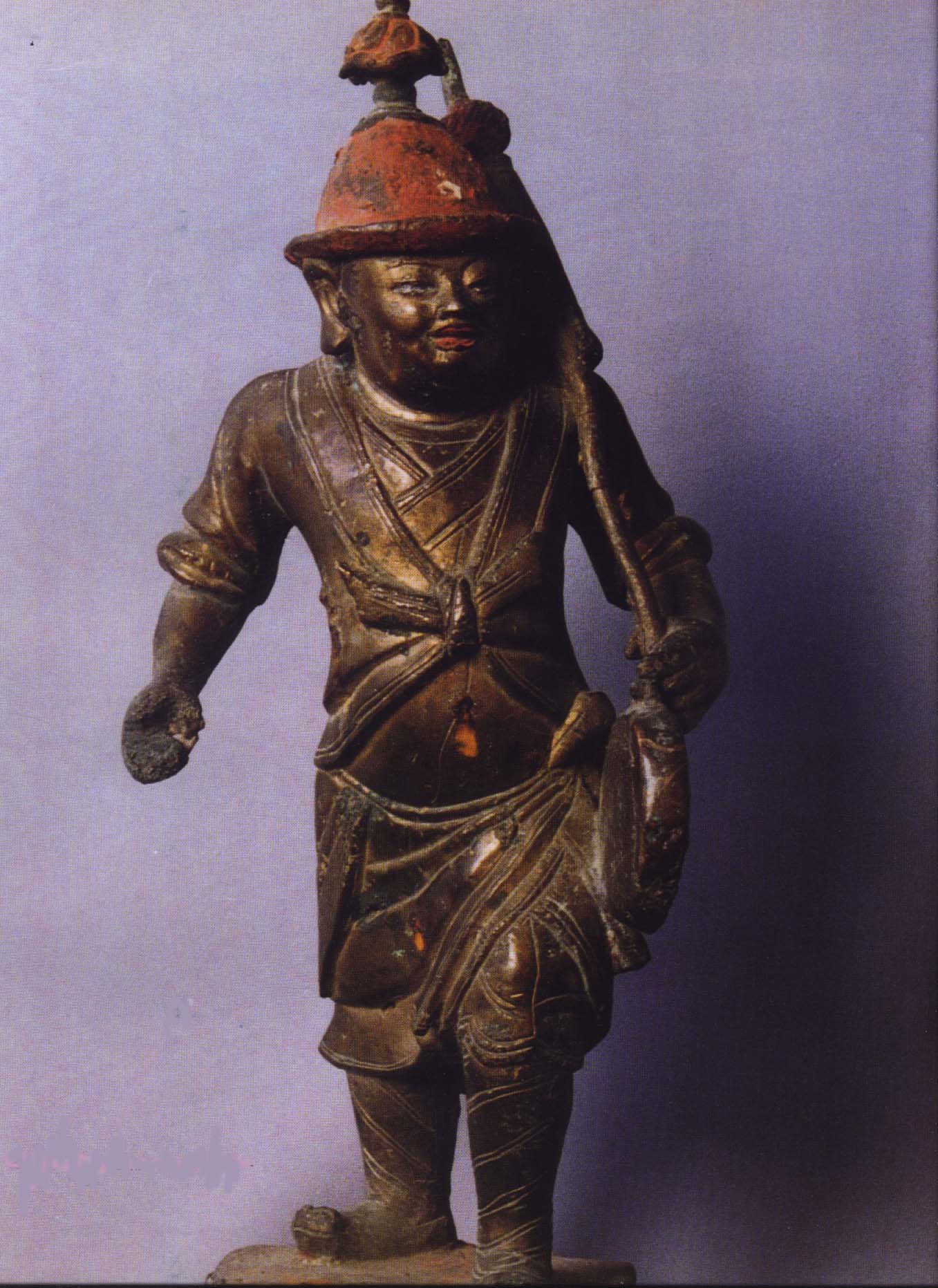锣
击奏体鸣乐器。是我国最普及的打击乐器之一。用响铜制,中心大多有一凸起的小圆面,称“脐”,对音质很大作用。有的锣无脐,如“云锣”,“深波锣”等。目前所知最早的锣出土于广西贵县罗泊湾西汉一号墓。我国锣的种类繁多,音色各具特点。最大的锣为“大抄锣”;最小的锣为“狗叫锣”,用于福建南曲和梨园戏乐队。
锣大多用于京剧和各种地方戏曲的伴奏乐队。节日喜庆时常用大锣、小锣同鼓、钹一起演奏。各地区和少数民族中衍生的锣丰富多样,它们都具有自己独特的音色和演奏风格。
LUO: GONG
Struck idiophone. The luo gong is one of the most popular percussion instruments in China. Made of high-tin bronze, the type has a central convex called qi, which has a great effect on the tone quality. However, some types have no such convex, e.g. yunluo (gong set) and shenpoluo. Its long history can be traced to the Western Han Dynasty (206 BC~AD 24) according to an archaeological find from a tomb of that period in Guangxi. Types of Chinese gongs are great in number, so are their tone qualities. The largest is da chaoluo; the smallest has a nickname goujiao luo, i.e. dog barking gong, used in Fujian nanqu opera and liyuan opera ensemble.
Chinese luo are mostly used in Beijing opera and many other local operas. On the occasions of festivals and celebrations large and small gongs are played together with drums and cymbals. Gong variants are also abundant in rural areas and minority regions, each with its own unique tone color and performing style.
未经允许不得转载:環球樂器博览网 » 锣 LUO: GONG
 環球樂器博览网
環球樂器博览网

评论前必须登录!
登陆 注册